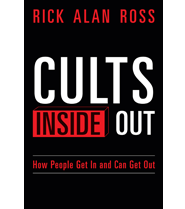Inside the Cult of Stefan Molyneux: A Historical Exploration of Far-Right Radicalisation on YouTube
Published By admin
Introduction
On June 29, 2020, YouTube removed 25,000 channels, including several prominent white supremacist figures such as David Duke, Richard Spencer, and Stefan Molyneux. While Duke and Spencer were generally well-known white supremacist figures, Molyneux specifically built his reputation on YouTube. The self-described philosopher has been labelled a cult leader spreading white supremacist ideas to millions of YouTube users, radicalising impressionable young men. The New Zealand Royal Commission also concluded that the Christchurch shooter watched and donated to Molyneux’s channel. Although watchdog organisations like the Southern Poverty Law Center extensively warned of Molyneux’s extremism, popular narratives about YouTube radicalisation still often focus on passive algorithmic pipelines and extreme cases of political violence. However, there is scarce empirical evidence on how audiences engage with problematic YouTube channels. YouTube’s current deplatforming efforts, by simply removing all data from public view, limit further critical analysis and understanding.
In this Insight, we present the key takeaways from an exploratory audience engagement study using an archival dataset of approximately two million YouTube comments from a ten-year period (2008 – 2018) on Molyneux’s YouTube channel. This rare dataset offers unique insight into an important moment in the growth of online far-right radicalisation—one currently invisible through the platform’s application programming interface (API). This piece aims to show the ‘everyday’ aspects of audience engagement with extremism on YouTube. To make our case, we first argue for a more participatory cultural understanding of YouTube radicalisation, highlighting active audience participation. We then present our methods and findings, revealing key participatory and discursive elements in Molyneux’s community. While Molyneux’s audiences express a wide range of opinions using various engagement tactics, we show how core audience members engage with extremist discourse from the perception of pursuing ‘Truth.’
YouTube Radicalisation
Over the past decade, YouTube has become notorious for its ‘radicalising power.’ Commentators such as the sociologist Zeynep Tufekci claimed that YouTube ‘may be one of the most powerful radicalising instruments of the 21st century.’ Although reporting is shifting, YouTube radicalisation is mostly attributed to sophisticated algorithms and how they expedite far-right extremism. However, recent research argues that such techno-centric analyses fail to account for demanding audiences: extreme political communities have incredibly high participation rates. Indeed, as audience studies have consistently demonstrated, viewers, readers, and listeners actively create meaning from and with the media they consume. As we have argued elsewhere, audiences in these communities “perceive themselves less as observers and more as participants in a conversation in which their voices matter”. It is thus worth asking how and why audiences engage with such extreme political narratives.
It might seem perplexing for outsiders of these YouTube communities that ideas about ‘scientific racism,’ eugenics and white supremacism would engage vast audiences. However, on YouTube, such ideas are often embedded within a specific vernacular culture, appealing to existing sensibilities by translating extreme political ideas to the platform logic to which users are already predisposed. For example, Becca Lewis pointed out that extreme political figures on YouTube use tactics like other popular influencers, engaging in interviews, guest appearances, debates, vlogging, and reaction videos.
Media studies have well documented how such practices are fruitful in building and maintaining audiences and establishing high levels of intimacy and parasocial relationships. YouTube increases this parasocial potential by affording audience engagement through features such as ‘likes’ and ‘comments’. In fact, YouTube’s technological facilitation of reciprocity is often seen as one of the platform’s core strengths. Extreme political figures on YouTube do not merely broadcast their ideas to a passive and receptive audience but develop them in dialogue with their audience, who present their own ideas, sources, and arguments.
Methodology
Using an archival dataset containing approximately two million YouTube comments from a ten-year period (2008 – 2018) on Molyneux’s YouTube channel, initiated by Dutch journalists at De Volkskrant and Correspondent, we could (1) analyse when Molyneux attracted active audience engagement and (2) follow how audiences engaged over time. The engagement mapping was done by plotting monthly comments and contextualising the emerging peaks. We used computer-assisted content analysis with 4CAT to detect important discussion points. On a micro-level, we specifically analysed the comments of six (anonymised) highly engaged audience members over time.
Operationalising the concept of ‘radicalisation’ is tricky. This is partly due to the divergent and sometimes vague interpretations of the concept from a diverse set of fields, including criminology, anthropology, social movement studies, and media and communications studies. When we talk about radicalisation in the context of this Insight and our study of ‘everyday’ extremism on YouTube more broadly, we follow the definition of radicalisation as “the process of developing extremist ideologies and beliefs”. As Peter Neumann points out, extremism does not necessarily imply violent acts or terrorism but may refer more broadly to adopting “political ideologies that oppose a society’s core values and principles”.
Content retrieved from: https://gnet-research.org/2023/05/17/inside-the-cult-of-stefan-molyneux-a-historical-exploration-of-far-right-radicalisation-on-youtube/.






